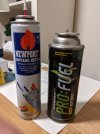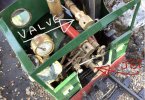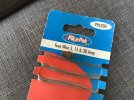JimmyB
Now retired - trains and fishing
When reassembling the gas system always use some PTFE tape on all the threaded joints to stop any unnecessary minor leaks
I hate hearing reading this, unless the joint is a taper thread joint, then you should NOT use PTFE tape on the threads, this prevents the actual sealing faces sealing. I have had to repair no end of leaks that have been caused by PTFE tape incorrectly used. So what is the method of sealing the joints there are three primary ones, though may variations:
- Flat face that has a washer or grommet NO PTFE.
- Olive type arrangement that mates directly with the "nut", there are compounds for these, but a turn of PTFE on the olive only.
- Taper threads, there are where the seal is made by the threads, and two turns of PTFE on the male thread in the direction of the thread, however often users end up blocking the hole with over enthusiastic use.



